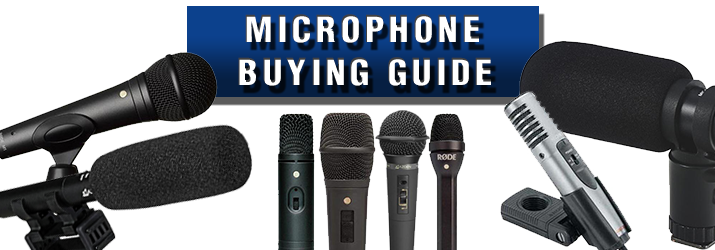Buying a Microphone
What to look for when purchasing a microphone? There are 5 common properties that affect the sound produced by a microphone:


1. Microphone Type: There are three types of microphones: dynamic, condenser, and ribbon. Church vocal microphones are usually dynamic microphones and condensers like the classic Shure SM 58 ("SM58® - Dynamic Vocal Microphone", 2019). Each type works differently and the nuances of the sounds they detect improve from dynamic to condenser to ribbon mics.
2. Polar Pattern: Microphones capture sound differently based on the source of the sound in relation to the head of the microphone. The area in which it captures sound is known as the polar pattern. These polar patterns show the regions around the microphone where the microphone will detect sound. The reason for these different types of patterns is to provide microphones that work best in specific environments or to get a specific sound.
3. Frequency Response: Microphones differ in how they respond to frequencies. One microphone might boost a frequency where another might reduce it. It’s usually based the mic’s purpose, such as a snare mic, a kick drum mic, or a vocal mic, but even within each of these types, the frequency response can vary greatly. Because of this variety, it’s best to pair a microphone with a frequency response that benefits a particular user. In short, why always eq out a problem area for a singer when the mic can do that for you. View the frequency response charts to see what they do.
4. Sensitivity: In short, microphone sensitivity is the measure of the microphone’s ability to convert acoustic pressure into an electric voltage. The higher the sensitivity, the less amplification required to bring the sound to a useable level on the mixer channel. Think of it like this, if you have a soft-spoken pastor or a soft singer, you want an extremely sensitive microphone.
5. Diaphragm Size: The portion of the microphone that detects the sound waves. This isn’t as much of a concern when we talk about church vocal microphones for single-use, but the different sizes can affect things like frequency sensitivity, especially when off-axis, as well as how much extra sounds are detected.
References:
SM58® - Dynamic Vocal Microphone. (2019). Retrieved 15 December 2019, from https://www.shure.com/en-US/products/microphones/sm58
101, C., & HERE, S. (2019). Vocal Microphone Guide - Behind The Mixer. Retrieved 15 December 2019, from https://www.behindthemixer.com/vocal-microphone-guide/
Comments
Post a Comment